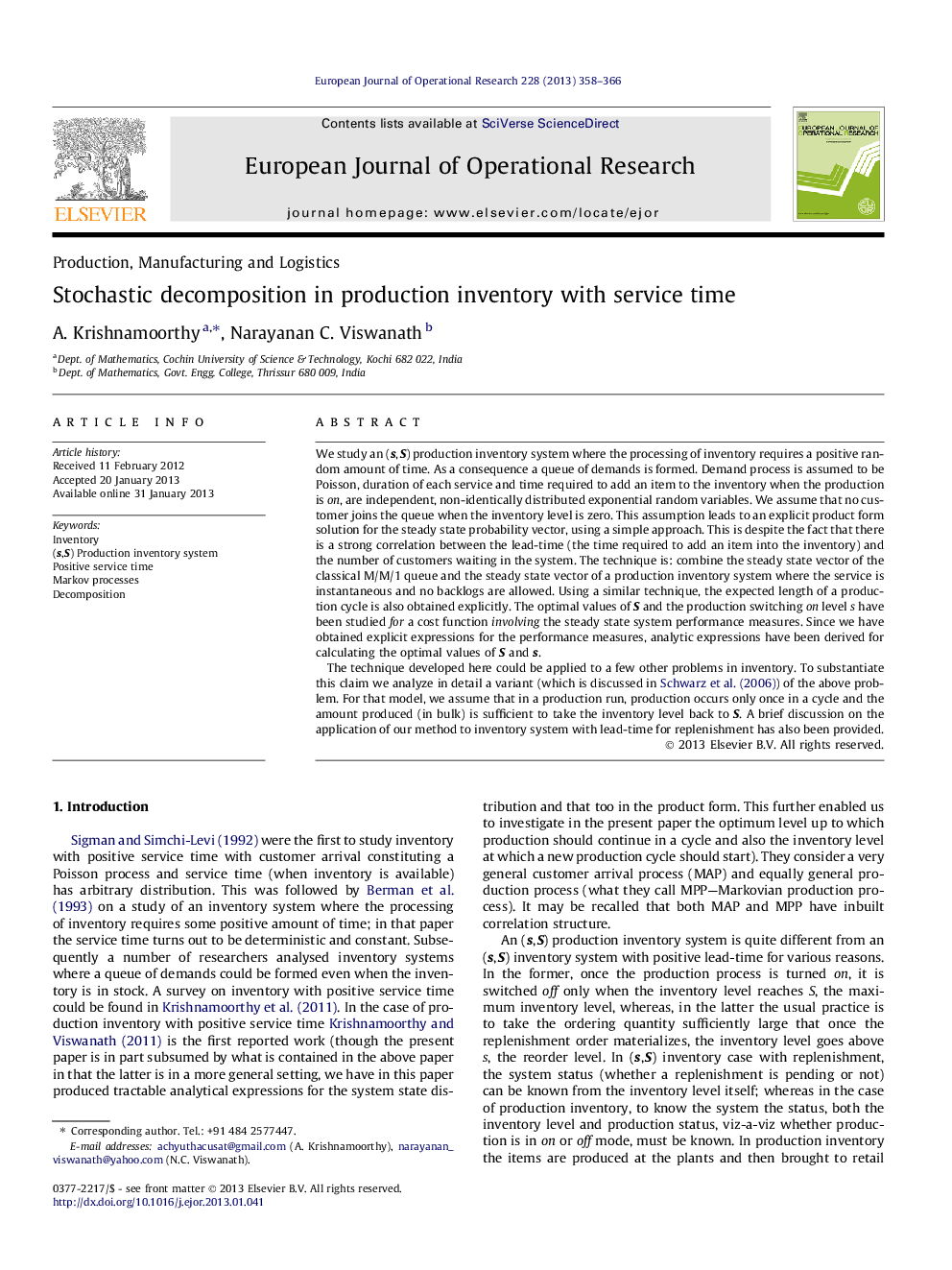| Article ID | Journal | Published Year | Pages | File Type |
|---|---|---|---|---|
| 478308 | European Journal of Operational Research | 2013 | 9 Pages |
We study an (s, S) production inventory system where the processing of inventory requires a positive random amount of time. As a consequence a queue of demands is formed. Demand process is assumed to be Poisson, duration of each service and time required to add an item to the inventory when the production is on, are independent, non-identically distributed exponential random variables. We assume that no customer joins the queue when the inventory level is zero. This assumption leads to an explicit product form solution for the steady state probability vector, using a simple approach. This is despite the fact that there is a strong correlation between the lead-time (the time required to add an item into the inventory) and the number of customers waiting in the system. The technique is: combine the steady state vector of the classical M/M/1 queue and the steady state vector of a production inventory system where the service is instantaneous and no backlogs are allowed. Using a similar technique, the expected length of a production cycle is also obtained explicitly. The optimal values of S and the production switching on level s have been studied for a cost function involving the steady state system performance measures. Since we have obtained explicit expressions for the performance measures, analytic expressions have been derived for calculating the optimal values of S and s.The technique developed here could be applied to a few other problems in inventory. To substantiate this claim we analyze in detail a variant (which is discussed in Schwarz et al. (2006)) of the above problem. For that model, we assume that in a production run, production occurs only once in a cycle and the amount produced (in bulk) is sufficient to take the inventory level back to S. A brief discussion on the application of our method to inventory system with lead-time for replenishment has also been provided.
► Product form solution for certain class of inventory problems has been discussed. ► A novel method for finding certain cycle lengths has been discussed. ► Optimality analysis of a cost function has been performed. ► Applicability of the method for some inventory problems has been illustrated.
